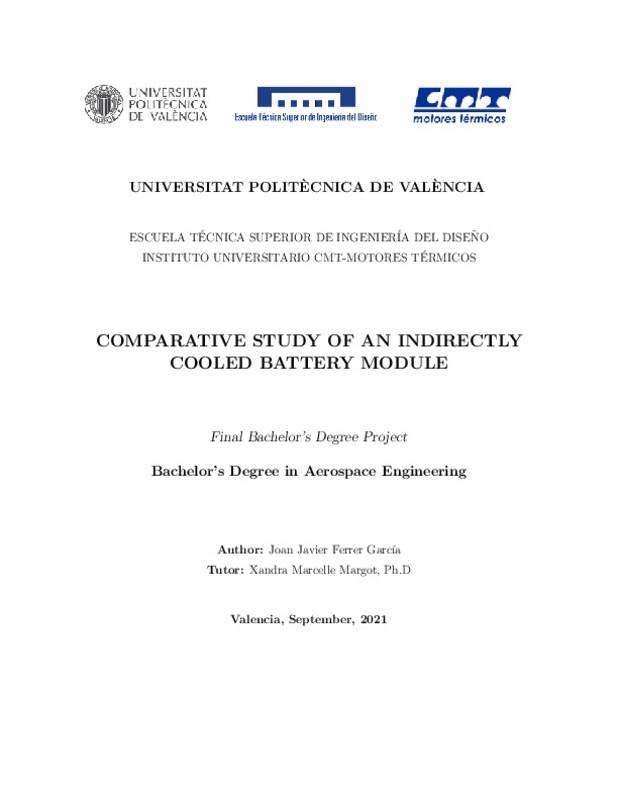|
Resumen:
|
[ES] Durante el desarrollo de este proyecto, se realizará un estudio comparativo del comportamiento de un módulo de batería con refrigeración indirecta. La celda estudiada es una batería TOSHIBA SCiB. Después de una breve ...[+]
[ES] Durante el desarrollo de este proyecto, se realizará un estudio comparativo del comportamiento de un módulo de batería con refrigeración indirecta. La celda estudiada es una batería TOSHIBA SCiB. Después de una breve discusión sobre los diferentes modelos disponibles en el programa ANSYS-Fluent, se utiliza el modelo de circuito equivalente ¿ECM¿ para los cálculos. El diseño del módulo, del sistema de refrigeración y del módulo de batería refrigerado vienen dados de un estudio previo que se describe aquí. En él se estudia el efecto del sistema de refrigeración para una descarga de la batería de 4C y un flujo másico total de 2,5 Kg/s. Los resultados muestran que el módulo alcanzaba temperaturas demasiado altas, por lo que se pudo concluir que el tiempo de residencia del fluido era muy pequeño y no extraía eficientemente el calor generado. Por tanto, en este proyecto, se reduce el flujo másico para mejorar el rendimiento respecto al caso anterior. Además, en el estudio anterior los parámetros del modelo eléctrico de la celda considerada no estaban disponibles, así que se utilizaron los parámetros que vienen por defecto en ANSYS Fluent. En este estudio, se utilizan los parámetros eléctricos reales de la batería TOSHIBA SCiB y se analizan las diferencias entre ambos casos
[-]
[EN] During the development of this project, a comparative study of the behaviour of an indirectly cooled battery module will be performed. The cell of the study is a TOSHIBA SCiB battery. After a short discussion on the ...[+]
[EN] During the development of this project, a comparative study of the behaviour of an indirectly cooled battery module will be performed. The cell of the study is a TOSHIBA SCiB battery. After a short discussion on the different models available in the ANSYS Fluent program used, the Equivalent Circuit Model ¿ECM¿ is used for the calculations. The design of the module, refrigeration system and refrigerated battery module comes from a previous study and it is fully described. In this previous study, the effect of the refrigeration system on the module temperature was studied during a 4C discharge of the battery and an overall 2,5 Kg/s mass flow. It showed that the module attained too high temperatures, whereby it could be concluded that the residence time of the fluid was very small and did not extract efficiently the generated heat. Therefore, in this project, the mass flow is reduced to achieve a better efficiency compared to the previous case. Additionally, in the previous study the electrical model parameters for the cell considered were not available, so the ones that come by default in ANSYS Fluent were used. In this study the real electrical parameters of the TOSHIBA SCiB battery are used, and the differences between both cases are discussed.
[-]
|







